If you're having trouble with image quality instead, take a look at the page on Sampling Modes and Reducing Noise. |
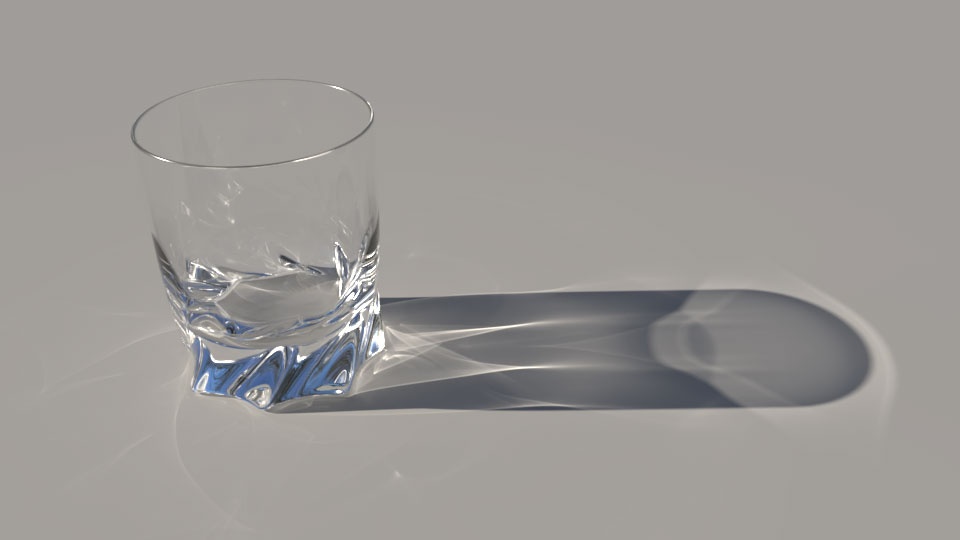
Glass Scene courtesy of Julien Duval
When rendering using ray tracing, it's common to adjust the ray depths used for tracing rays through the scene.
When rendering in RenderMan, rays travel through a scene and bounce off objects, collecting light. This is known as "light transport" that moves through the scene and returns a value to the screen for the pixel. This isn't unlike real life where photons bounce around and are collected by a camera lens and stored onto film or a sensor element. In the real world case, the photons bounce around until finally absorbed by something. In RenderMan, this can be true with really high trace depth or you can set an artificial limit of how many bounces you want. This is an optimization technique designed to improve performance for time and memory at a small cost to photographic realism compared to actual physics.
The PxrUnified Integrator does not support separate diffuse and specular depth by default and these are ignored. Instead it has a unified max depth control or you may enable the option known as useTraceDepth in the integrator separately. |
There are two main parameters per-object for deciding how much bounce will happen before a ray is terminated and the result is stored.
These are per-object settings and not renderer options for RenderMan. Some bridge product UIs may expose this globally but that means on export for rendering the setting is applied to every object as though it were a rendering option. |
Why are they separate?
It's possible that you only need higher depths of one interaction, specular or diffuse. So rather than trace more rays of a type that may be unnecessary visually, the user can decide which needs to travel further. Below are some examples. We'll begin with Diffuse Depth
Below we have a simple scene that represents a long diffuse box-like trench with mirrors on either end and some red spheres. We'll set the Specular Depth to zero to avoid it completely. Max Diffuse Depth is set to zero as well.
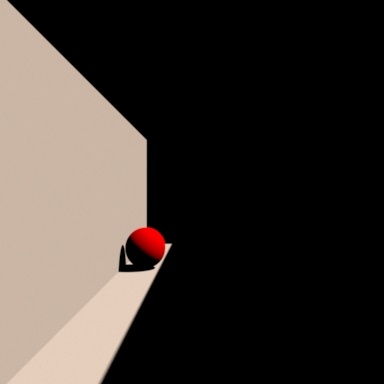
There's not a lot to see. This is direct lighting only at this depth (0 additional bounces). In fact, we can confirm this by using the PxrDirectLighting Integrator and see we get the exact same image. So below we'll increase just the Max Diffuse Depth Parameter to get a better look at the scene.
Notice how the image gets brighter with the additional bounces but even as the bounces creep higher and higher, the change becomes more and more subtle as energy is eventually absorbed. For this reason, most animation, and visual effects work is only interested in one to two bounces at most. Architectural and product renderings may require much more than that.
Remember the explanation of the scene, there are mirrors at either end of the trench. Rendering the scene with Specular Depth zero and Diffuse Depth one gives us the below image. Doesn't appear to be any reflection happening.
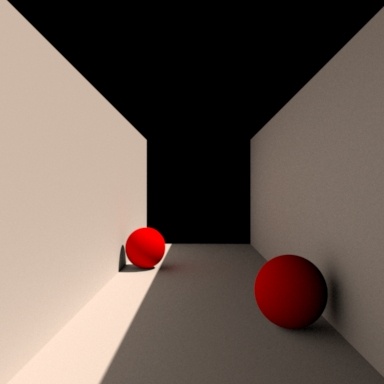
There's not going to be any visible reflections or refractions at this setting, so we'll increase the amount below.
You can clearly see how added depth increases the number of times something reflects in the mirror. This is the perfect way to build a funhouse of mirrors. However, there is a much more common scenario where this will make the most difference, and that's in rendering multiple glass surfaces.
Rendering specular surfaces requires a higher trace depth to appear realistic. For mirrors, you should have a depth of at least two for acceptable realism. For glass or other similar objects (ice, jewels, windows, cars headlamps, etc.) then at least 4 and higher.
Below is an example using the PxrPathTracer integrator with default settings. Each frame increases the Max Specular Trace Depth by one. Since lights default to the Thin Shadows mode for transparent objects, adding diffuse depth/bounces isn't visually significant in this particular scene.
If using the PxrPathTracer for such scenes you can keep your trace depth to lower numbers because of how RenderMan tracks each bounce. This is counted differently in the PxrVCM and PxrUnified integrators and may require higher trace depths in those integrators for a similar look. This may change in a future version. |
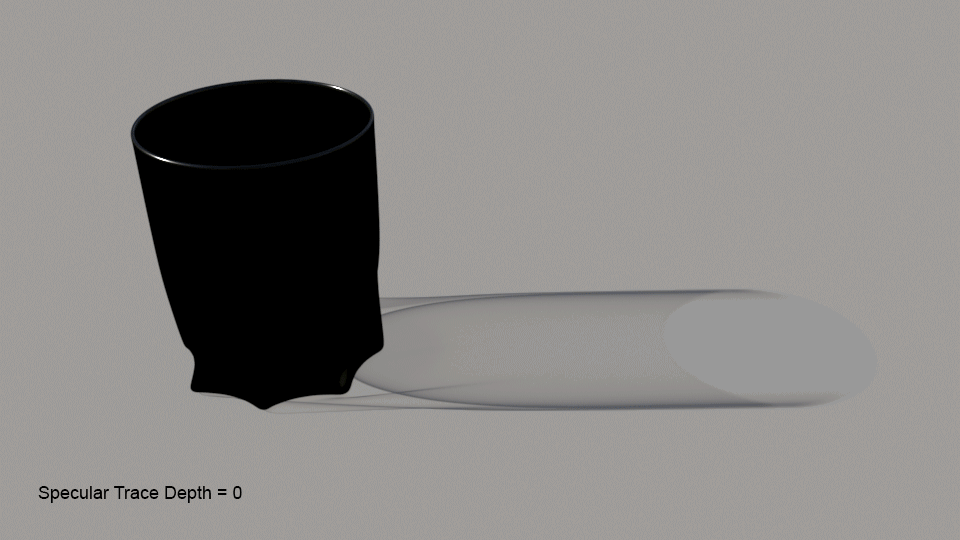
Below we use the PxrVCM integrator to show the results of raising the trace depths on a glass, beginning with a trace depth of zero for both diffuse and specular bounces. Trace depth count is handled differently in RenderMan's bidirectional integrators.
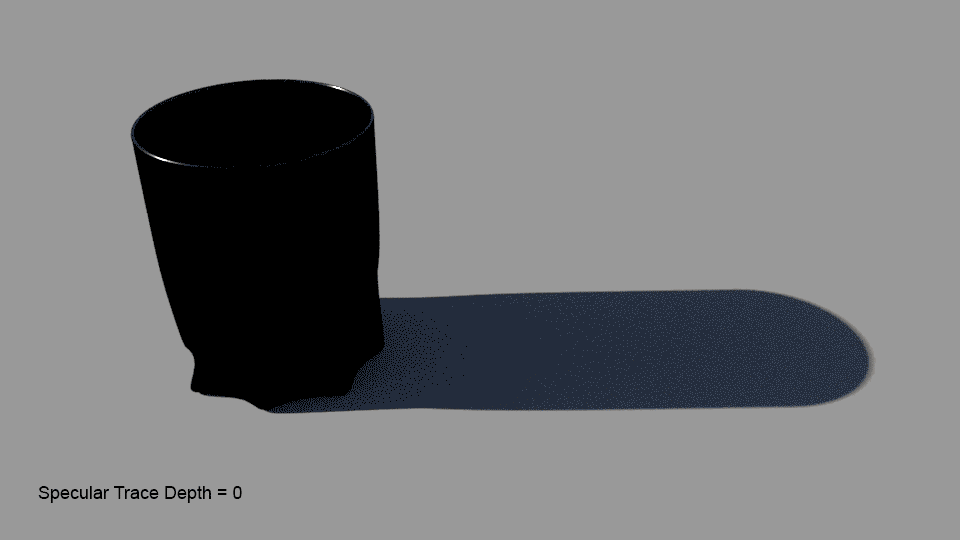
As you can tell from the progression, specular trace depth makes a lot of difference in the look of the scene. As the trace depth increases, more light is collected from beyond the next glass surface. The diagram below explains how each segment of the path may look.
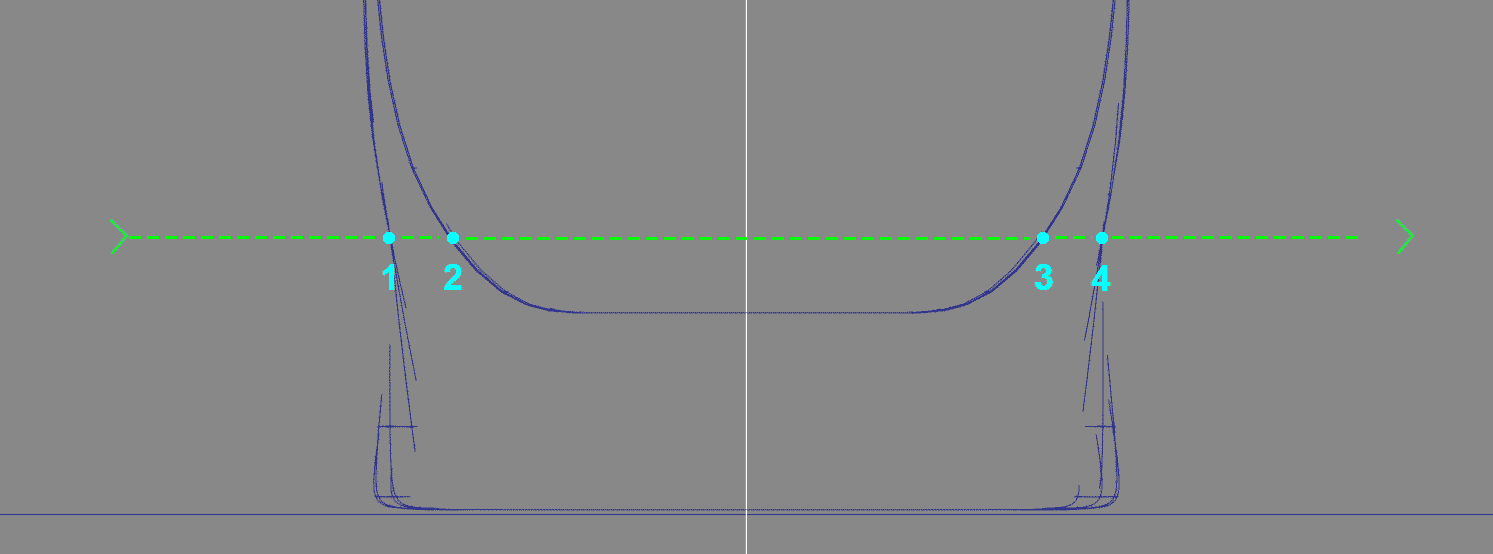
You'll notice in the animation that the glass becomes truly transparent at depth four. If you look at the above illustration you'll notice the cross section of the correctly modeled glass has 4 surfaces to pass through before exiting. Since the first intersection is handled by the camera ray (corresponds to the 1 on the illustration) you would need 4 more to pass through 2, 3, and 4 and still have depth to exit the glass. This is what makes the glass transparent where we can see the ground on the other side.
Let's add some diffuse bounces now.
Using the PxrVCM integrator and Trace Light Paths in the PxrDomeLight, you'd expect to see caustic light patterns off of and through the glass. But with the Max Diffuse Depth at zero, there's no collection of diffuse lighting from the glass at all. Below the diffuse depth is increased for each render by one and you can see quite a dramatic difference in the amount of light collected. You may also notice that this is an artificial way to limit caustics in your scene if they become time-consuming or distracting visually.
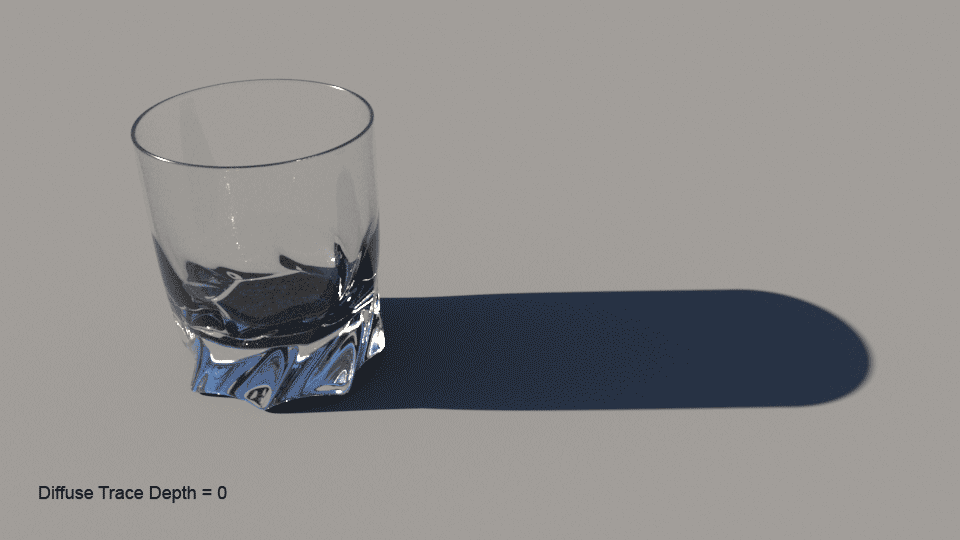
It might be useful to clamp the number of bounces allowed in the scene. Typically scenes have scattered specular and diffuse objects. Rarely do they all line up where you need to see clearly through many objects. As such you can still specify large trace depths but also define a maximum combination of the two. In these cases, you may get more of one or the other effect based on what type of object the renderer is rendering. In the above glass examples, you may exhaust your specular depth while some diffuse depth may not be visually important. So, in this case, we may set a Specular and Diffuse Max Depth to 5. We may only need the maximum of a single depth and not both, which would add to 10 total bounces.
Objects in a scene may be given local overrides to increase or decrease their trace depth settings. These are Max Diffuse Depth and Max Specular Depth. When using these attributes be sure the global Max Path Length as described above is sufficient or else it may stop tracing too soon if these local controls are raised too high.